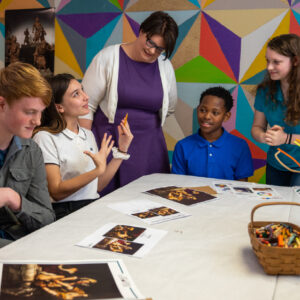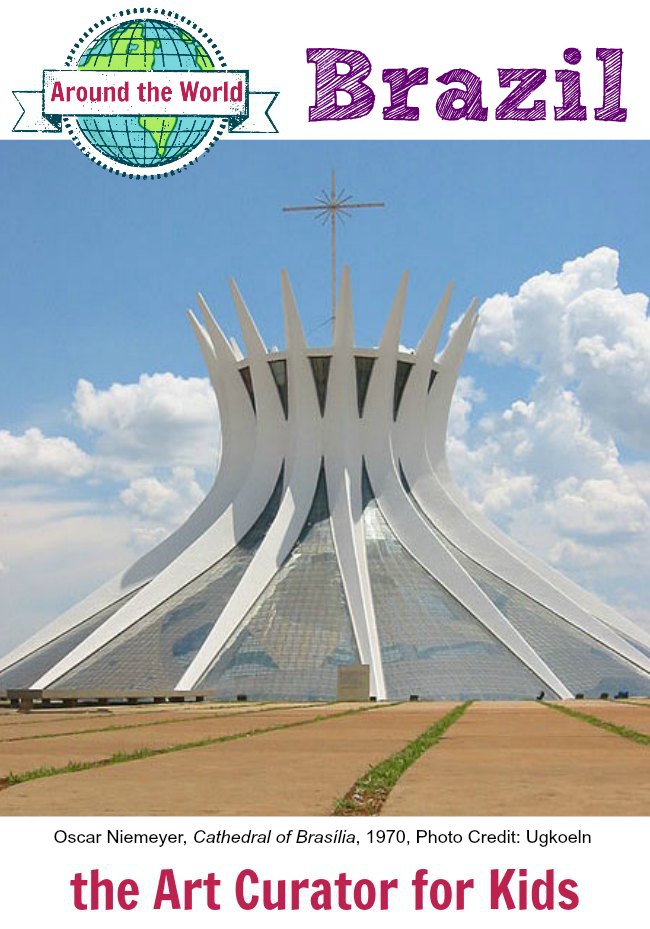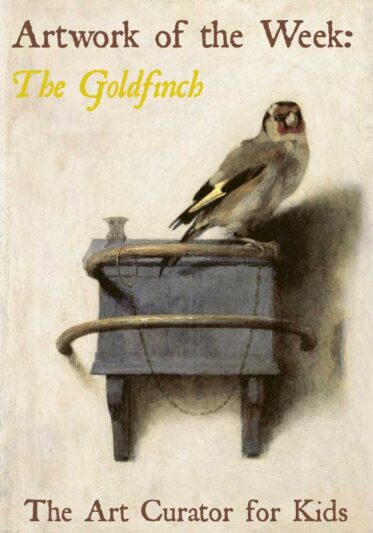Welcome back to Art Around the World in 30 Days. We are on Day 29! Today, we’re going to look at a beautiful building in Brazil, the Metropolitan Cathedral of Brasília. It’s pretty amazing!
The History of Brasília, Brazil
The City of Brasília, Brazil has a pretty fascinating history. It is the capital of Brazil and was only founded rather recently in 1960. It was planned and developed specifically to be the nation’s capital, and several architects basically planned the city from scratch. The architects were Oscar Niemeyer and Lúcio Costa, and the landscape architect was Roberto Burle Marx.
I find that to be just amazing. Most cities have a history–starting from nothing and slowly evolving through time. It makes me think of Rome and in one short walk you see Ancient Roman ruins, Baroque cathedrals, and modern day businesses. To just start a city from the ground up in a matter of 41 months is just mind-boggling to me. 41 months! That’s how long it took to build the capital of Brazil.
Oscar Niemeyer designed the majority of the public buildings of Brasília including the Brazilian National Museum, the National Congress, the National Library, the residence of the President, and the Metropolitan Cathedral which we will learn about today. Each building has elements that tie them together to create unity.
The Metropolitan Cathedral of Brasília
The Metropolitan Cathedral of Brasília is just gorgeous. The outside is a hyperboloid structure, which is a building designed using hyperbolic geometry. Without getting too mathy on you, hyperboloid structures curve inward with the bottom being the widest area, a narrow spot about three quarters of the way up curving up to to a wider area at the very top. It can be used as a design element or as a way to hold up something high up.
This Cathedral is made with columns of reinforced concrete that almost look weightless as they are thin at the bottom and thicker at the top. The sides are entirely made of stained glass. Notice how I didn’t say that the walls are made of stained glass. Technically, those aren’t the walls. What we are looking at when we look at an exterior shot of this building is the ceiling. The rooms of the Cathedral are all underground.

Architecture is most amazing when the full experience of the visitor is taken into consideration, and Neimeyer did this beautifully. To enter, you walk past four sculptures of Evangelists, a bell tower, and a pillar with Bible stories. A almost 40 foot wide reflecting pool surrounds the exterior and visitors go under it on their way into the Cathedral.
Continuing on, visitors must pass through a dark tunnel before entering the spectacular and brilliantly-lit interior of the Cathedral. The ceiling is almost entirely made of stained glass by artist Marianne Peretti. Her designs are curved and flowing lines as calm and cool as flowing water. Three sculptures of angels by Alfredo Ceschiatti float above as well.
Imagine what it must feel like headed through a dark tunnel and walking into this place? Wonderful.

Cathedral of Brasilia Discussion Questions
- Describe the lines and colors in this building.
- How would it feel like to be in the place? What would it feel like to enter the building?
- What do you think the architect wanted you to think about when experiencing this building?
- Describe this place using your 5 senses. What would you see? hear? smell? feel? taste? (Check out my 5 senses worksheet here.)
Architecture Project Idea
Study other buildings that create a full experience for visitors and compare them with this one. Then, have students design their own building taking into consideration the full experience from the exterior to the interior. Have students think about how the design of architecture projects a feeling or mood and refers to the function of the building in a more symbolic way.
Other buildings you could study alongside this one:
- Baslica di San Vitale, Ravenna Italy
- Louvre Museum Pyramid by I.M. Pei
- Chartres Cathedral (or any Gothic church)
- Guggenheim Museum in Bilbao, Spain
- Sultan Ahmed Mosque, Istanbul
That’s it! Thanks for reading. I’d love to hear your thoughts about the artwork in the comments. Click here to find more art from around the world, and come back tomorrow for our last stop on our world tour!

Get the Full Lesson!
This Lesson is in The Curated Connections Library!
Find the full lesson from this post along with hundreds of other art teaching resources and trainings in the Curated Connections Library. Click here for more information about how to join or enter your email below for a free SPARKworks lesson from the membership!







This is such a great series! Thanks for sharing it at the #laughlearnlinkup! I’ll be pinning it to my art board, too!
Thank you! 🙂